 Most viewed - SAITAMA 埼玉県 Most viewed - SAITAMA 埼玉県 |
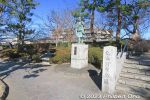
Statue of Matsuo Basho in Fudaba-kashi Park on the southern end of Soka-Matsubara. Statue was built in 1989 to mark the 300th anniversary of Basho's Oku-no-Hosomichi journey in 1689. Built with donations.4 views
|
|
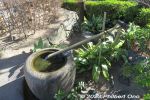
4 views
|
|
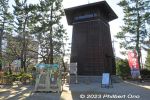
Watchtower on the southern end of Soka-Matsubara. 望楼4 views
|
|
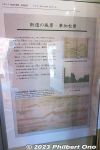
4 views
|
|
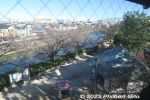
4 views
|
|

Post towns along the Nikko Kaido Road to Nikko.4 views
|
|
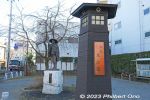
Statue of Kawai Sora (河合曾良), Matsuo Basho's travel companion for his Oku-no-Hosomichi five-month journey on foot to Tohoku and Hokuriku Regions. Statue built in 2008 to mark Soka's 50th anniversary.4 views
|
|

Sora Kawai traveled with Haiku poet Matsuo Basho for most of Basho's Oku-no-Hosomichi poetry journey on foot to Tohoku and Hokuriku Regions in 1689.4 views
|
|
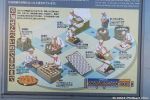
How to make Soka senbei rice crackers. At least 10 steps.4 views
|
|
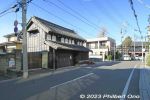
Soka-juku Shinmei-an tourist info center closed on March 21, 2022. The staff moved to the tourist info center near the Basho statue in Fudaba-kashi Park. 草加宿神明庵4 views
|
|

Shinmei Shrine 神明神社4 views
|
|
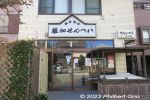
Soka senbei shop on the old Nikko Kido Road.4 views
|
|
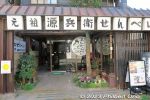
Another Soka senbei shop. There are over 60 senbei shops in Soka.4 views
|
|
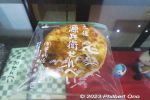
Soka senbei rice cracker. ¥904 views
|
|
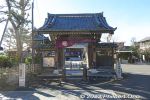
Tofukuji Temple gate.4 views
|
|

Tofukuji Temple was first built in 1606 by Okawa Zusho who once served the Hojo Clan in Odawara, Kanagawa.4 views
|
|
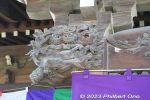
Tofukuji's bell tower is noted for wood carvings. 4 views
|
|
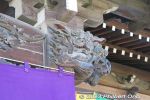
4 views
|
|
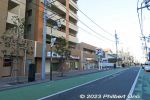
Honjin lodge monument in Soka-juku, Nikko Kaido Road. 大川本陣跡碑4 views
|
|
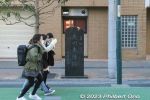
Okawa Honjin lodge monument in Soka-juku, Nikko Kaido Road. There was also another Honjin in Soka-juku. 大川本陣跡碑4 views
|
|
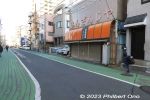
Original road marker in Soka-shuku, Saitama on the Nikko Kaido. 道標元標4 views
|
|
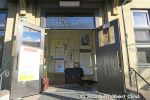
Soka folk history museum entrance. Free admission.4 views
|
|
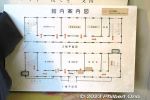
Floor layout on the 1st and 2nd floors. The old classrooms are now exhibition rooms for local history and artifacts.4 views
|
|
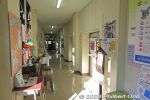
4 views
|
|
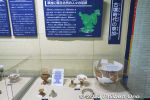
Ancient pottery found in Soka.4 views
|
|
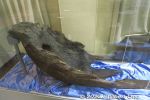
4 views
|
|
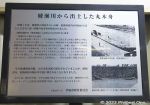
About the ancient dugout canoe excavated from Ayase River in 1929.4 views
|
|

Documents related to traveling on the Nikko Kaido.4 views
|
|
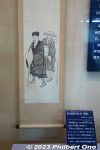
Replica scroll painting of Matsu Basho and Kawai Sora who visited Soka in 1689.4 views
|
|
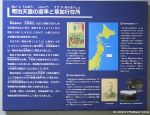
About Emperor Meiji's visit to Soka in 1876 and 1881 when he was traveling to Tohoku or Hokkaido.4 views
|
|
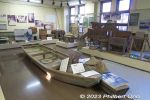
Factory equipment4 views
|
|
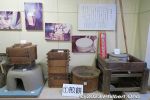
Senbei production equipment for mochi pounding.4 views
|
|
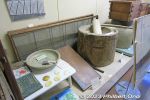
Senbei production equipment.4 views
|
|
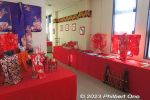
On the 2nd floor, Hinamatsuri Girl's Day dolls.4 views
|
|
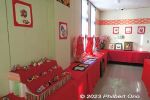
On the 2nd floor, Hinamatsuri Girl's Day dolls.4 views
|
|
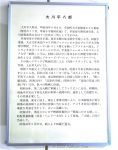
About Heihachiro Okawa.4 views
|
|
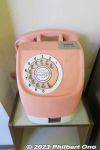
Pink pay phone in Japan. Now obsolete. Took only ¥10 coins.4 views
|
|
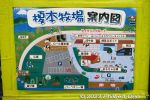
Map of Enomoto Dairy Farm. Free admission. Parking available. There's a small pasture for cows, cow shed, milking machine, and gelato stand. 4 viewsBeing next to Arakawa River, it's a popular rest stop among cyclists riding along the river. Nicknamed "Little Hokkaido."
|
|
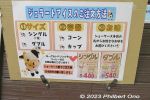
Gelato flavors and pricing. ¥400 for single scoop. Get the double and try two different flavors.4 views
|
|
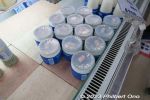
Enomoto Dairy Farm yogurt is made of real milk. No preservatives. Website: http://www.enoboku.com/4 viewsFrom Ageo Station west exit, take the local bus to the Azeyoshi bus stop. Takes 30 min. Most people come by car or bicycle. Address: 736-1 Azeyoshi, Ageo, Saitama
埼玉県上尾市畔吉736-1
|
|
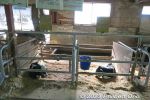
Newborn calves. They have tags indicating their birthdate.4 views
|
|
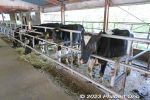
Each cow/calf has an electronic tag for management purposes.4 views
|
|
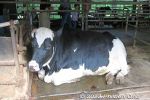
This big cow just stared at me without blinking. 4 views
|
|
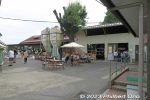
On the left is the shed for adult cows. 成牛舎4 views
|
|
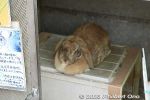
Rabbit with drooping ears.4 views
|
|
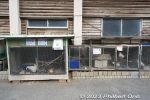
Chickens and other birds.4 views
|
|
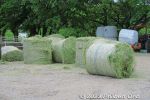
Rolls of hay. ロール置き場4 views
|
|
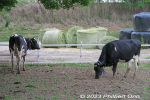
Cows and hay.4 views
|
|
|
|
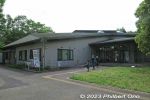
Saitama Nature Study Center is a visitor's center with park staff, park maps, a small library, nature exhibits, meeting rooms, and park offices. Open 9:00 a.m. -5:00 p.m. (Till 7:30 pm on weekends and national holidays.) Guided tours start inside.4 views
|
|
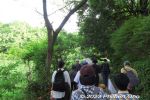
Guided tour of the park. About an hour long.4 views
|
|
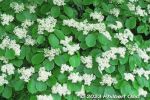
Not allowed to pick any plants.4 views
|
|
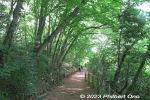
Nature trail.4 views
|
|
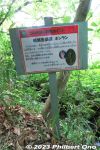
Endangered flower species named golden orchid. Vulnerable (VU). キンラン(金蘭)4 views
|
|
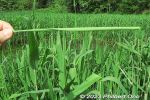
Our guide showed us how to create a wind instrument using wild leaves like this. Roll it up into a cylinder and blow.4 views
|
|
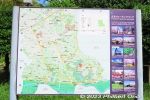
Kitamoto has other walking trails. Looks pretty during cherry blossom season.4 views
|
|
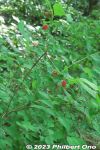
Small edible fruit of this flowering plant. Lonicera gracilipes Miq. var. gracilipes ヤマウグイスカグラ(山鶯神楽) 4 views
|
|
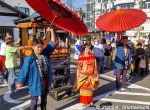
About halfway on the procession route, they stop at a parking lot where there's a stage. Here's Princess Kazunomiya played by a local lady.4 views
|
|
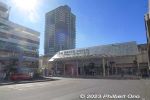
Dokkyodaigakumae Station (Tobu Railway from Asakusa) east exit. Get out here to walk to Soka-Matsubara.3 views
|
|
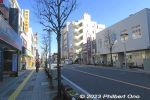
While walking on this main road to Soka-Matsubara, you will soon see the large arch bridge over the road.3 views
|
|
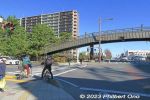
Where the Soka-Matsubara pine tree path intersects with a major road at two locations, there's a large arch bridge to enable pedestrians to keep walking non-stop along the pine trees.3 views
|
|
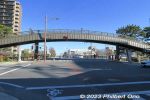
This is one of the two arch bridges. Named Hyakutai-bashi (百代橋), 62.5 meters long, 3.5 m wide. It has steps and a narrow slope to push bicycles. Not wheelchair accessible.3 views
|
|
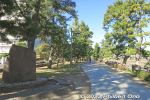
Matsuo Basho monument3 views
|
|
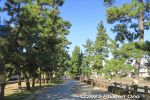
Soka-Matsubara pine trees north of Hyakutai-bashi Bridge.3 views
|
|
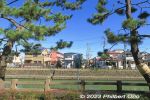
A local group was formed in 1976 to replant pine trees. Their efforts was successful with 500+ trees planted. Vehicular traffic through the pine trees stopped in 1982. Thankfully, it's now pedestrians only.3 views
|
|
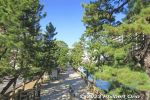
Northern view from Hyakutai Bridge.3 views
|
|
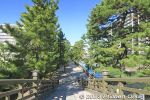
Northern view of pine trees from Hyakutai Bridge.3 views
|
|
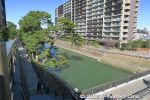
3 views
|
|
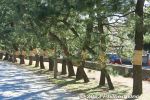
Straw bands are wrapped on the tree trunks to catch harmful insects.3 views
|
|
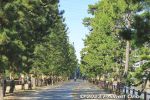
3 views
|
|
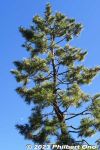
3 views
|
|
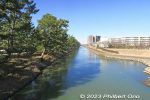
Soka Matsubara goes along the Ayase River. 綾瀬川3 views
|
|
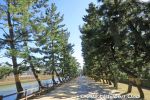
Such a pleasant walk along Soka-Matsubara.3 views
|
|
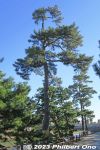
3 views
|
|
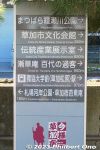
Directions and distances.3 views
|
|
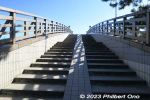
Going up Yatate Bridge.3 views
|
|
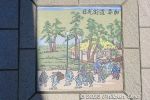
Picture tile on the bridge depicting a samurai procession on the Nikko Kaido in Soka.3 views
|
|
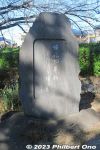
3 views
|
|
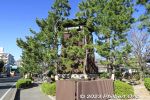
Fudaba-kashi Park on the southern end of Soka-Matsubara also has this rebuilt watchtower. 3 views
|
|
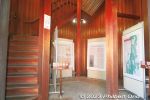
First floor of watchtower has a few exhibits explaining about Soka-Matsubara and Soka-juku post town.3 views
|
|
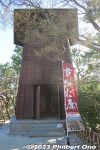
Watchtower is free and open to the public.3 views
|
|
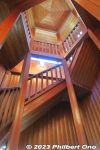
Spiral steps up the wooden watchtower.3 views
|
|
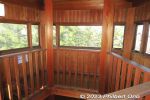
Top floor and lookout atop the watchtower.3 views
|
|
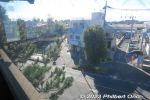
3 views
|
|
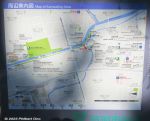
Map of Soka-Matsubara and Soka-juku post town, short walk away.3 views
|
|

About the watchtower and Soka post town.3 views
|
|
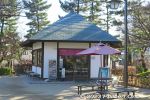
Near the watchtower is Soka-juku Basho-an, a visitor information center.3 views
|
|
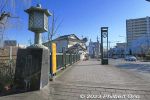
Bridge to Osen Park.3 views
|
|
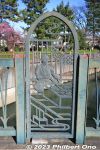
3 views
|
|
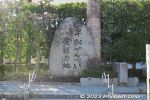
Soka senbei rice cracker birthplace monument in Osen Park, Soka, Saitama. Soka was a rice-growing area and farmers first made rice crackers as a snack. 3 viewsThey were later sold to travelers when Soka-juku was established and became a cottage industry. They also used soy sauce from Noda. 草加せんべい発祥の地の碑
|
|
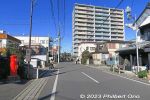
What the old Nikko Kaido looks like today. Nikko Kaido was one of the five main roads from Edo (Tokyo) during the Edo Period (17th to 19h centuries). 3 viewsNikko was important for having the splendid mausoleum for Tokugawa Ieyasu, the first Tokugawa shogun.
|
|
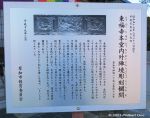
About Tofukuji Temple Hondo main hall wood carvings. 3 views
|
|

3 views
|
|
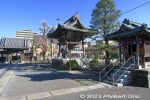
Tofukuji's bell tower.3 views
|
|
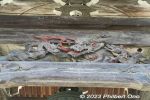
Tofukuji's bell tower dragon wood carvings. 3 views
|
|
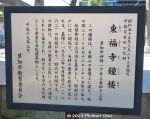
About Tofukuji's bell tower.3 views
|
|
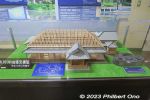
Scale model of the Okawa Honjin lodge in Soka-juku.3 views
|
|
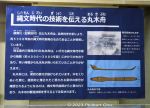
About the dugout canoe from 5,300 years ago.3 views
|
|
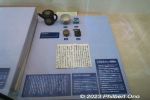
A few implements from the Okawa Honjin lodge.3 views
|
|
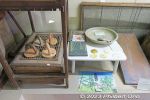
Senbei production equipment for roasting and drying.3 views
|
|
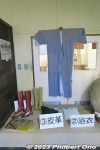
Leather footwear and yukata kimono are also made in Soka.3 views
|
|
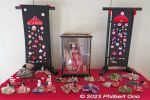
On the 2nd floor, Hinamatsuri Girl's Day dolls.3 views
|
|
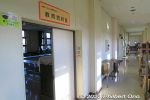
2nd floor hallway.3 views
|
|

Former classroom used as a meeting room.3 views
|
|
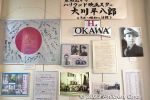
Movie actor from Soka named Okawa Heihachiro (1905–1971) (aka Henry Okawa) who made it to Hollywood. He was in "The Bridge on the River Kwai" movie. 大川 平八郎3 views
|
|
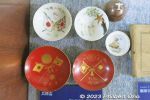
Japanese soldiers returning from the war gave these gifts to their well-wishers. From the 1930s. These are ceremonial sake cups. 兵隊盃3 views
|
|
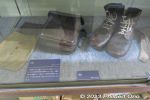
Japanese soldier's bag and boots from 1930s.3 views
|
|
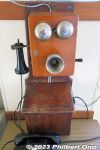
Old telephone from 1931. Soka started telephone service in 1918. Only 60 phone numbers at first. By 1953, 431 people had a telephone number.3 viewsデルビル磁石式壁掛電話機
|
|
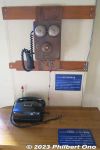
Old telephone.3 views
|
|

Push button phone widely used in Japan until the early 1990s.3 views
|
|
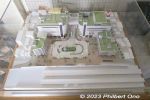
Model of AKOS shopping complex in front of Soka Station.3 views
|
|

The calf shed is where newborn calves are raised. 育成舎3 views
|
|
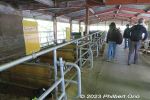
The calf shed is where calves and cows are raised until they reach adulthood.3 views
|
|
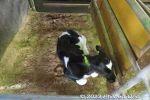
The cow shed also has many calves born recently. They first weigh 40 to 50 kg and reach adulthood in 2.5 years when they weigh up to 700 kg.3 views
|
|
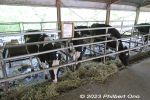
These cows are 6 to 14 months old. At 14 months, they move to the adult cow shed for artificial insemination. The farm has 60 to 70 Holstein cows for milk.3 views
|
|
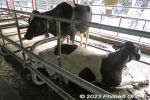
These adult cows will give birth soon. Do not feed any of the cows or animals. They are already well fed.3 views
|
|
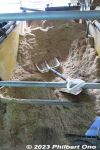
Cow feed.3 views
|
|
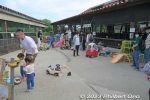
Kids' play area with donated tricycles, etc.3 views
|
|
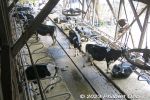
Adult male cows. 成牛舎3 views
|
|
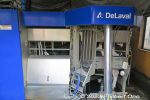
Milking machine is a robot operating 24/7. Each cow produces 20 to 30 kg of milk per day. 授乳所3 views
|
|

Explanation of the work done at a dairy farm. On weekends, you can pay a fee (¥2200) to try and milk a cow manually and feed some hay. Reservations required. at least two days in advance.3 views
|
|
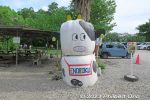
Barbecue area on the left.3 views
|
|
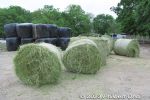
3 views
|
|

This machine quickly spins the hay roll as it wraps it with vinyl.3 views
|
|
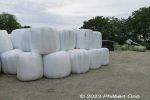
Rolls of hay wrapped in vinyl.3 views
|
|
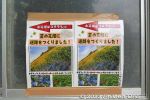
Way to the riverside flowers blooming in April to May.3 views
|
|
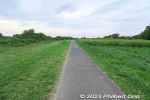
Behind Enomoto Dairy Farm is Arakawa River and this cycling road lined with spring flowers.3 views
|
|
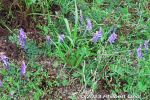
3 views
|
|
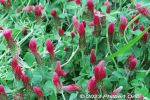
Strawberry Candle flowers. Pretty name. People were allowed to pick these flowers and take it home.3 views
|
|
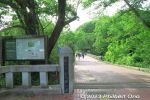
Park entrance. The park is open to the public from 9:00 am to 5:00 pm (until 7:30 pm on weekends and mid-summer.) Closed Mon. unless it's a national holiday. Free admission. Parking available. 15 min. by bus from JR Kitamoto Station (JR Takasaki Line3 viewsAddress: 5-200 Arai, Kitamoto, Saitama
埼玉県北本市荒井5-200
埼玉県自然学習センター
|
|
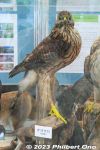
Northern goshawk, juvenile.3 views
|
|
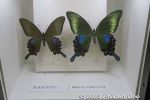
Chinese peacock butterfly. カラスアゲハ3 views
|
|
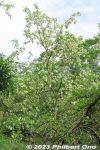
3 views
|
|
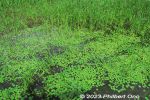
3 views
|
|
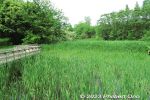
Boardwalk and reeds where birds and fish can live.3 views
|
|
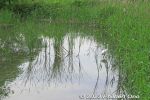
Heron.3 views
|
|
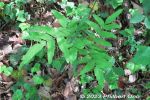
3 views
|
|
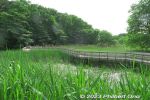
Nice boardwalk across the marsh where we could see and observe birds and water plants. Our guide brought a binoculars which we used to spot bird nests.3 views
|
|
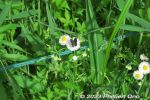
Dainty flower.3 views
|
|
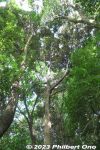
Evergreen tree named Castanopsis. Leaves are green on the top, but brown on the underside. Produces acorns. スダジイ(すだ椎 Castanopsis sieboldii subsp. sieboldii)3 views
|
|
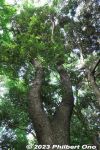
Evergreen tree named Castanopsis. Leaves are green on the top, but brown on the underside. Produces acorns. スダジイ(すだ椎 Castanopsis sieboldii subsp. sieboldii)3 views
|
|
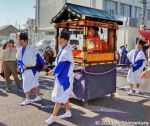
Princess Kazunomiya's palanquin in the procession during the Okegawa Shimin Matsuri (桶川市民まつり) on Nov. 3 (national holiday).. Her real palanquin had no wheels and she was carried by hand. 皇女和宮行列3 views
|
|

Members of the Princess Kazunomiya procession are introduced on stage at around 2 pm. The procession ends at around 3 pm at Kido-ato (木戸跡). Thanks to A. Shimamura for these photos.3 views
|
|

Enomoto Dairy Farm is a real dairy farm with cows and calves to produce dairy products. Their gelato is super popular and really good. Educational for kids to see live cows, what they eat, how they are milked (by machine), and where milk comes from. 2 views
|
|
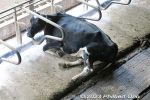
2 views
|
|
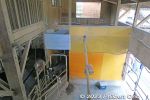
The adult cow she has this milking station where the cows are automatically directed to the milking machine. 授乳所2 views
|
|
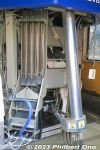
The milking machine uses red light beams and sensors to detect the nipples and attach the milking tubes. 2 views
|
|
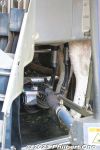
However, I noticed that the cow kept moving and couldn't stand still, so the machine had to keep trying until it attached to the nipples.2 views
|
|

How milk is produced. 1. The cow's udders are disinfected. 2. The milking machine sucks out the milk to a pipe going to a tank. 3. The milk is cooled. 4. The milk is transported by tanker truck to the factory where it is processed and packaged into m2 views
|
|

Types of cows. The cow's excrement and urine are converted into fertilizer for growing vegetables, etc.2 views
|
|

Posters explaining the work done at the dairy farm, anatomy of a cow, and the life cycle of cows. At the dairy farm, cows are fed, cow shed is cleaned, hay is made, and cows are milked.2 views
|
|
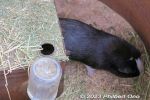
Marmot that you can pet. Be sure to wash or disinfect your hands afterward.2 views
|
|
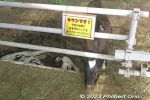
Calf in the pasture. 放牧場2 views
|
|
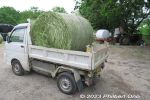
Hay for cows.2 views
|
|
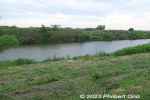
The dairy farm's backyard has Arakawa River.2 views
|
|

Nemophila (baby blue eyes).2 views
|
|
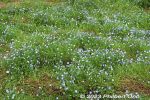
Nemophila (baby blue eyes) in late April.2 views
|
|
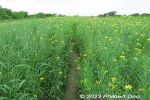
Rapeseed blossoms (nanohana) in late April.2 views
|
|
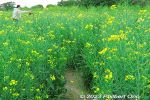
Rapeseed blossoms (nanohana) were made into a maze.2 views
|
|
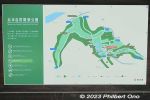
Kitamoto Nature Observation Park is spread over 26.7 hectares and home to a variety of plants and animals, including over 1,700 species of insects and 160 species of wild birds.2 views Lots of marshland where birds can nest. Walking paths are provided for visitors. The park includes a nature study center, a library, and guided tours on weekends.
|
|
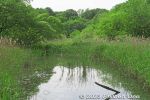
Marshland and reeds provide habitats for nesting birds. We saw Little Grebes nesting here.2 views
|
|

My YouTube video (three parts) of the 2009 Kita-Urawa Awa Odori dance festival held on September 5, 2009.2 views
|
|
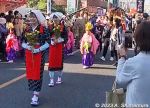
The most famous VIP to stay in Okegawa was an emperor's daughter named Princess Kazunomiya (1846–1877) when she was traveling from Kyoto to Tokyo to marry shogun Tokugawa Iemochi.2 viewsShe lodged in Okegawa on Nov. 13, 1861 and her entourage numbered over 30,000. 皇女和宮行列
|
|

The procession route is on the old Nakasendo Road (closed to traffic) starting at 1:30 pm at Okegawa Elementary School. Here's Princess Kazunomiya's banner in front of her palanquin.2 views
|
|
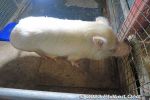
The shed also has pigs. These are mini pigs, not baby piglets. You can touch them. The fur is stiff like a hard brush. After touching, wash your hands.1 views
|
|
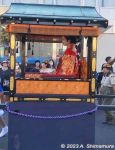
Princess Kazunomiya on her palanquin in Okegawa-juku. The procession route is on the Nakasendo Road from Okegawa Elementary School to Kido-ato. 1 views
|
|
|
|
| 2434 files on 10 page(s) |
 |
 |
 |
 |
10 |
|